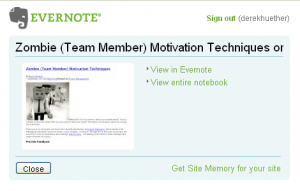smokedetector
Why am I writing about replacing smoke detector batteries? It's all about process improvement. Every six months, we are tormented by our home smoke detectors chirping after we replace the batteries. As a rule, we know we're supposed to replace smoke detector batteries at daylight savings time (twice a year). Also, if the smoke detectors start chirping or beeping off and on, we know it's time to change the batteries. Six months ago, I decided I was going to put an end to the chirping once and for all. I planned to document the battery replacement process and find out how to consistently replace the batteries with no chirping. I created a decision table to help me get it all out on paper. I then spent a few hours writing test procedures and testing the outcomes. If you want to drive yourself a little crazy, listen to smoke detectors screaming in your ear for a few hours. After all was said and done, I had a successful process documented.
You may ask yourself why I didn't check Yahoo Answers or eHow for the answer to my problem. Well, I did and they sucked!
I searched on: Smoke Detector Battery Replacement Process, How to Change the Batteries in Your Smoke Detector Chirping Smoke Detectors Stop Chirping Smoke Detectors...
So, if the planets align and there is some poor sucker out there suffering from the same problem, I hope you find this post and it works for you.
Scenario: We live in a three level home. Each of the smoke detectors is wired into a single circuit and they all use 9volt batteries. We are using standard First Alert smoke detectors. In the past, if we replaced any or all batteries, the smoke detectors would chirp randomly.
How to avoid the annoying smoke detector beeping
Replace the battery and make sure the + and - are facing the correct direction.
One smoke detector at a time, replace the battery, connect the electrical plug, then push the test button.
Let the detector cycle through the screaming load test.
If there is more than one detector, move on to the next.
What was the problem?
The problem I was running into was the hush button. The detector was so loud, I would push the hush button before it was allowed to run it's test cycle. I included the action on my decision table and was able to isolate the problem there.
Just in case, in the event I forgot the process, I saved it in Evernote. I just replaced all of the batteries and it worked perfectly. I was so excited, I just had to blog about it.




